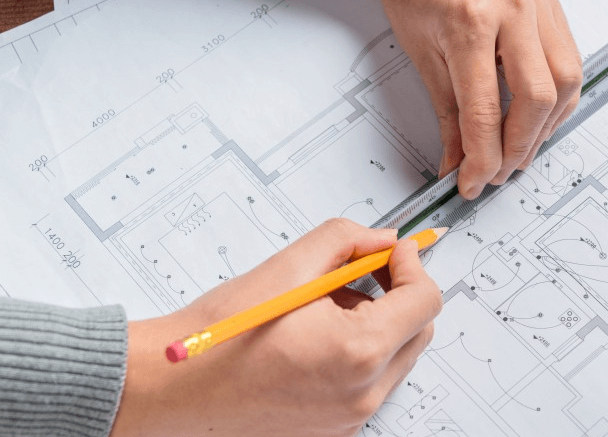
Intellectual property practitioners are familiar with the implications of errors in a patent application. These errors can undoubtedly result in an office action. While filing a design patent application, a majority of design patent drawing errors occur due to insufficient disclosures in patent drawings/illustrations. Therefore, these mistakes invite office action from the patent examiner. This article talks about the top three design patent drawing errors that can harm a design patent application.
Also Read: Professional Patent Drawings Can Help You Save Thousands of Dollars
What is an Office Action?
An office action is a letter that the examiner at United States PTO (USPTO) issues to highlight patent application errors. Design patent drawings/illustrations must meet specific requirements as per the patent drawing guidelines issued by the USPTO. Since the intent of the drawings is the disclosure of a design patent, errors in it lead to patent rejections.
Also Read: How to Enhance Creativity of Design Patent Drawings
Benefits of Error-Free Design Patent Drawings/Illustrations
Getting the patent drawings/illustrations correct in the first go saves efforts put in by the illustrators. Similarly, it also reduces the cost of acquiring a patent. Flawless patent drawings/illustrations make patents more enforceable against infringers. Moreover, it allows competitors to gauge clearly if they are infringing on a patent or not.
Also Read: How to Correct Patent Drawings Rejected Due to Unclear Broken-Line Disclosures
Common Design Patent Drawing Errors That Result in Office Actions
The office action for design patent drawings is issued for insufficient disclosures under the 35 U.S.C Section 112. There are three categories that include: non-enablement, inconsistency, and ambiguousness. Let us look at some major design patent drawing errors due to lack of consistencies (35 U.S.C 112(a) and (b)).
Though not mandatory, illustrators submit perspective views to depict the height, width, and depth of the designs. Any inconsistency between these figures implies that they cannot co-exist.
If the design patent drawings/illustrations are inconsistent, it also gets difficult to establish what an inventor is trying to patent. Therefore, look out for these three common design patent drawing errors in consistency to avoid office actions.
Part Consistency Error
Design patent drawings/illustrations must contain a sufficient number of views. These help to completely disclose the appearance of the claimed design. Further, it includes the front, rear, right and left sides, top, bottom, and perspective view of the article. Part consistency error occurs when the drawings/illustrations do not depict the parts of an article in these views. Further, it may also happen when they completely miss out on displaying some parts.
Similarly, if the components are not in the same position in the drawings, you call it as a consistency error. For instance, in the figure below, the position of the middle bottom hole is not consistent with other holes. These errors are common in large and complex patent drawings/illustrations.
To avoid these mistakes, part views must be consistently drawn throughout all the views (37 CFR 1.152). The shape of the parts in all planner views should be consistent with perspective views. Also, the height, width, angle, thickness, etc. of the parts should be the same in all planner views.
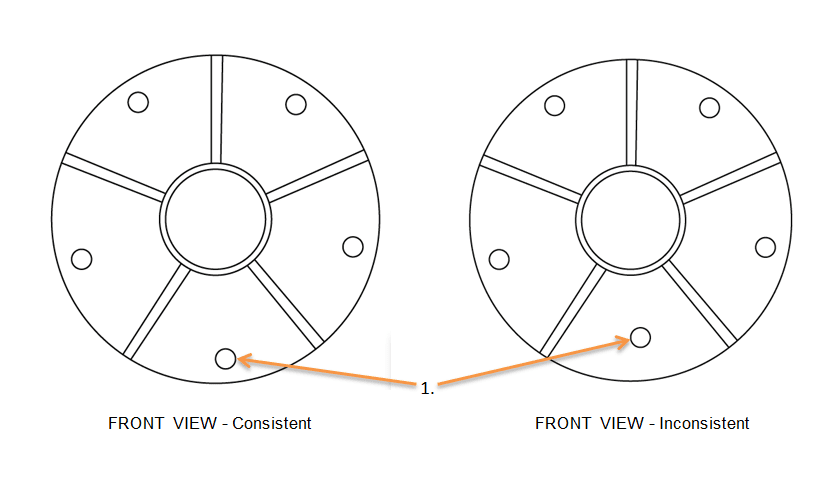
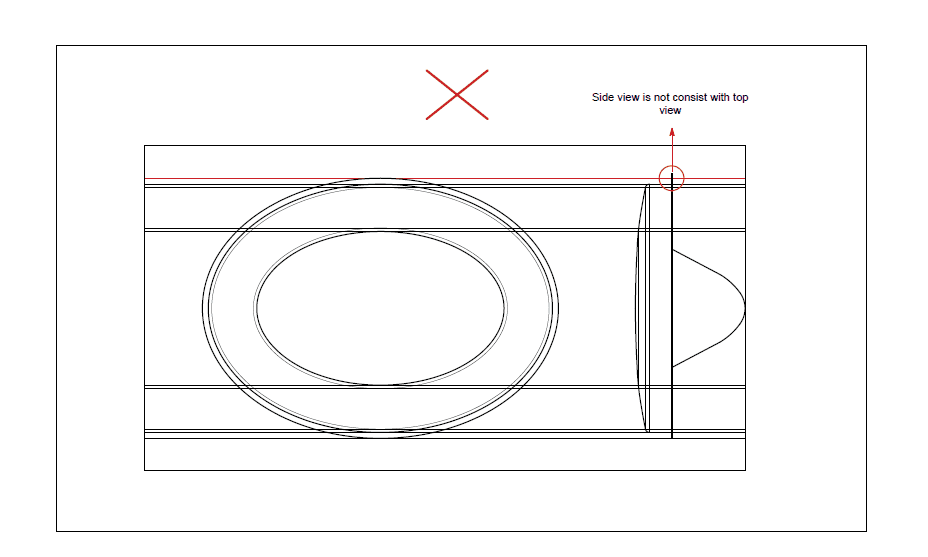
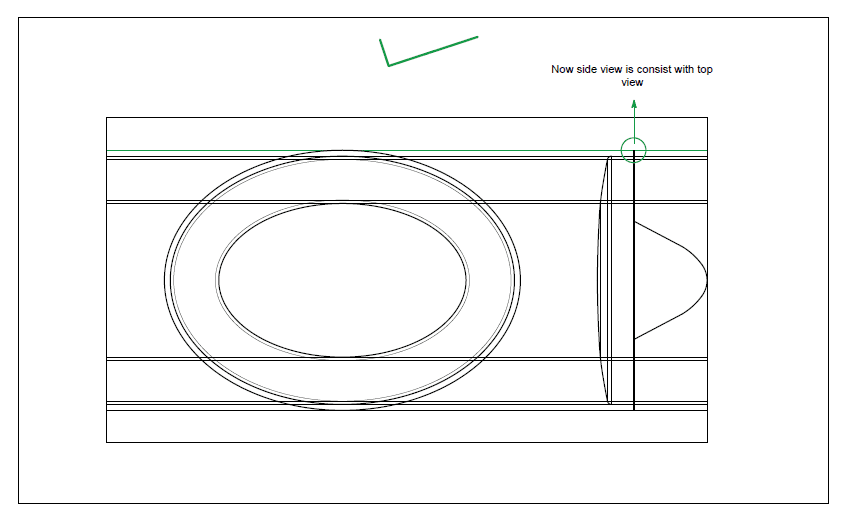
Shading Consistency Error
Shading consistency plays a vital role in avoiding office actions. The use of shading is helpful if it facilitates the understanding of an invention. Moreover, it helps the examiner to understand the surface area of the product easily.
For instance, shading indicates the surface or shape of flat, spherical, cylindrical, and conical elements of an object. Shading consistency errors occur when shading on the surface is so excessive that it can be mistaken for a pattern. Space lines and thin lines are better for shading. These lines should be as few as practical (37 CFR 1.84(m)).
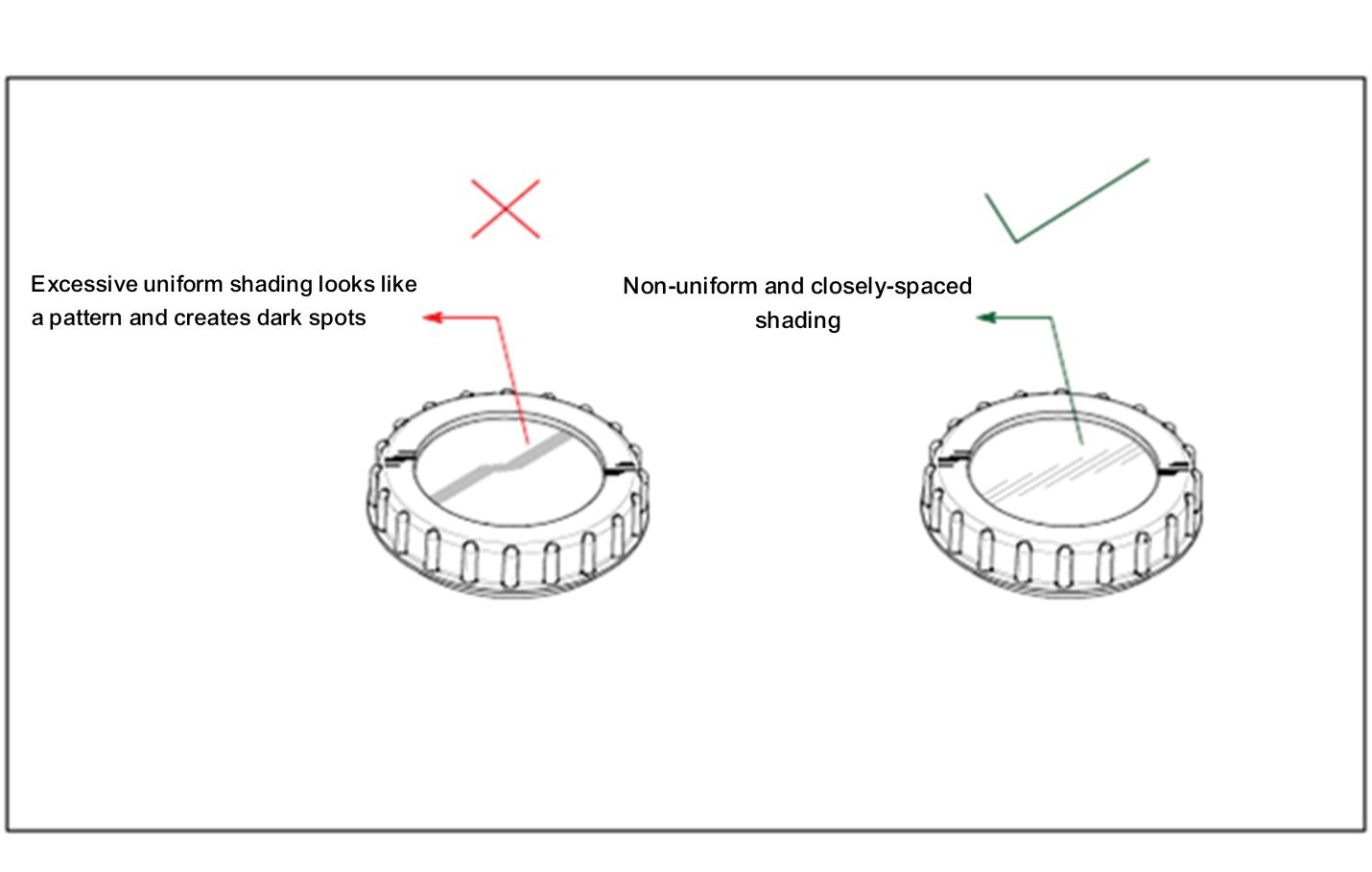
Claim or Disclaim Consistency Error
Consistency errors related to claimed or disclaimed parts can occur easily. In design patent drawings, illustrators disclaim a part in the article and miss out on depicting it in other views. Therefore, the inconsistency between the perspective and other views invites an office action on the part of the USPTO examiner. Similarly, you must not use shading inside the disclaimer area according to (MPEP.1503.02)(II)).
In the below image, one can find inconsistency between the perspective and front view.
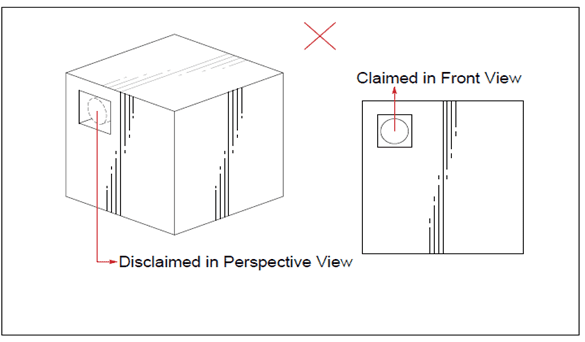
The below image depicts consistency between the disclaimed areas perfectly.
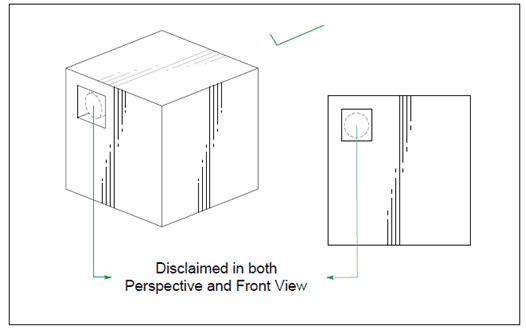
Also Read: Invention Drawings: Why Do You Need Them?
Correcting Errors in Design Patent Drawings/Illustrations
While filing an office action response, the illustrators must include a replacement sheet. This helps to depict the corrections and modifications as demanded by the examiner. A replacement sheet corrects the inconsistencies over which the examiner issues a rejection. While drafting the replacement sheet, the illustrator should not introduce a new matter and only correct the inconsistencies.
According to USPTO, the response to the office actions must be received within six months from the mailing date. Further, it must happen within two-three months if the applicant wants to escape the extension-of-time fees. The deadlines do not extend beyond six months except for notices that do not have a statutory period for reply. Finally, the response must cater to each ground of rejection and objection stated by the examiner.
Related Article: WIPO Patent Drawing Rules for PCT Applications
Conclusion
Before filing a design patent application, it is best to avoid the above-mentioned mistakes. Flawless patent drawings/illustrations are critical for a successful patent application. Therefore, you must hire a professional and knowledgeable patent illustrator who is an expert in this area. However, do not lose hope if an application results in an office action. Such patent drawing/illustration errors can usually be fixed.
PatSketch realizes the importance of patent illustrations and offers patent drawing/illustration services to its valuable clients. Our team of experienced illustrators make drawings/illustrations with high precision. Further, they prepare it in compliance with the patent drawing rules of the patent and trademark office (PTO) concerned.
– Himanshu Panwar and Rupesh Vajpayee (Illustration) and the Editorial Team
Other Related Articles
Patent Proofreading Process – A Complete Analysis
